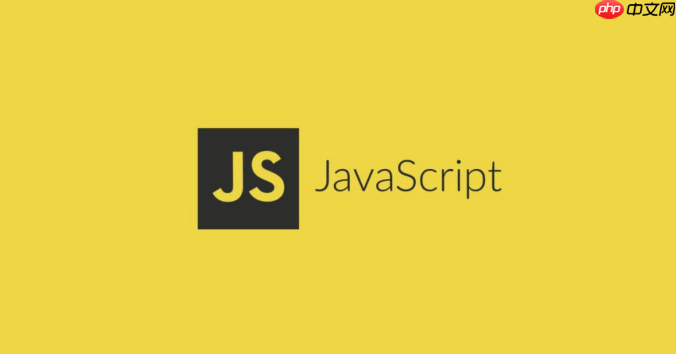javascript数组按字段排序需使用sort()方法并自定义比较函数。1. 基本排序通过比较对象属性值实现,升序返回-1,降序返回1;2. 数字字段可用减法简化比较;3. 处理缺失字段时需检查undefined或null,避免排序错误;4. 类型不一致时先尝试转为数字,否则转为字符串比较;5. 多字段排序需依次比较每个字段,直到得出结果;6. 性能优化可采用缓存比较结果减少重复计算,适用于复杂比较场景。完整实现可根据需求选择对应策略。

JavaScript数组按字段排序,其实就是让数组里的对象按照某个属性值的大小排列。这事儿挺常见的,但处理起来也有些小技巧。

解决方案
JavaScript提供了
sort()
立即学习“Java免费学习笔记(深入)”;

function sortByField(arr, field, reverse = false) {
return arr.sort((a, b) => {
if (a[field] < b[field]) {
return reverse ? 1 : -1;
}
if (a[field] > b[field]) {
return reverse ? -1 : 1;
}
return 0;
});
}
// 示例
const users = [
{ name: 'Alice', age: 30 },
{ name: 'Bob', age: 25 },
{ name: 'Charlie', age: 35 }
];
// 按年龄升序排序
const sortedByAgeAsc = sortByField(users, 'age');
console.log(sortedByAgeAsc);
// 按年龄降序排序
const sortedByAgeDesc = sortByField(users, 'age', true);
console.log(sortedByAgeDesc);
// 按姓名排序(字符串比较)
const sortedByName = sortByField(users, 'name');
console.log(sortedByName);这里,
sortByField
reverse
reverse
a[field]
b[field]
如果字段是数字类型,直接相减可能更简洁:

function sortByNumberField(arr, field, reverse = false) {
return arr.sort((a, b) => reverse ? b[field] - a[field] : a[field] - b[field]);
}
// 示例
const products = [
{ name: 'Laptop', price: 1200 },
{ name: 'Mouse', price: 25 },
{ name: 'Keyboard', price: 75 }
];
const sortedByPriceAsc = sortByNumberField(products, 'price');
console.log(sortedByPriceAsc);
const sortedByPriceDesc = sortByNumberField(products, 'price', true);
console.log(sortedByPriceDesc);sortByNumberField
b[field]
a[field]
如何处理字段缺失或类型不一致的情况?
在实际应用中,我们可能会遇到字段缺失或类型不一致的情况。例如,某些对象可能没有某个字段,或者字段的值可能是
null
undefined
function sortByFieldSafe(arr, field, reverse = false) {
return arr.sort((a, b) => {
const aValue = a[field];
const bValue = b[field];
if (aValue === undefined || aValue === null) {
return reverse ? -1 : 1; // 将缺失字段的元素排在后面
}
if (bValue === undefined || bValue === null) {
return reverse ? 1 : -1; // 将缺失字段的元素排在后面
}
if (aValue < bValue) {
return reverse ? 1 : -1;
}
if (aValue > bValue) {
return reverse ? -1 : 1;
}
return 0;
});
}
// 示例
const items = [
{ name: 'Item A', value: 10 },
{ name: 'Item B' },
{ name: 'Item C', value: 5 }
];
const sortedItems = sortByFieldSafe(items, 'value');
console.log(sortedItems);在
sortByFieldSafe
undefined
null
undefined
null
如果字段类型不一致,例如同时存在数字和字符串,我们需要进行类型转换。
function sortByFieldWithTypeConversion(arr, field, reverse = false) {
return arr.sort((a, b) => {
const aValue = a[field];
const bValue = b[field];
const aNum = Number(aValue);
const bNum = Number(bValue);
if (isNaN(aNum) || isNaN(bNum)) {
// 如果无法转换为数字,则进行字符串比较
const aStr = String(aValue);
const bStr = String(bValue);
if (aStr < bStr) {
return reverse ? 1 : -1;
}
if (aStr > bStr) {
return reverse ? -1 : 1;
}
return 0;
} else {
// 如果可以转换为数字,则进行数字比较
return reverse ? bNum - aNum : aNum - bNum;
}
});
}
// 示例
const mixedItems = [
{ name: 'Item A', value: '10' },
{ name: 'Item B', value: 5 },
{ name: 'Item C', value: '2' }
];
const sortedMixedItems = sortByFieldWithTypeConversion(mixedItems, 'value');
console.log(sortedMixedItems);这里,我们尝试将字段值转换为数字。如果转换成功,则进行数字比较;否则,进行字符串比较。这样可以处理字段类型不一致的情况。
如何进行多字段排序?
有时候,我们需要按照多个字段进行排序。例如,先按照年龄排序,如果年龄相同,则按照姓名排序。
function sortByMultipleFields(arr, fields) {
return arr.sort((a, b) => {
for (const field of fields) {
if (a[field] < b[field]) {
return -1;
}
if (a[field] > b[field]) {
return 1;
}
}
return 0; // 所有字段都相等
});
}
// 示例
const students = [
{ name: 'Alice', age: 20, grade: 'A' },
{ name: 'Bob', age: 20, grade: 'B' },
{ name: 'Charlie', age: 22, grade: 'A' }
];
// 先按年龄升序,再按姓名升序
const sortedStudents = sortByMultipleFields(students, ['age', 'name']);
console.log(sortedStudents);sortByMultipleFields
如何优化排序性能?
对于大型数组,排序可能会比较耗时。为了优化性能,我们可以考虑以下几点:
sort()
function sortByFieldWithCache(arr, field, reverse = false) {
const cache = new Map(); // 使用 Map 存储比较结果
return arr.sort((a, b) => {
const aKey = JSON.stringify({ a: a[field], b: b[field], reverse });
const bKey = JSON.stringify({ a: b[field], b: a[field], reverse });
if (cache.has(aKey)) {
return cache.get(aKey);
}
let result;
if (a[field] < b[field]) {
result = reverse ? 1 : -1;
} else if (a[field] > b[field]) {
result = reverse ? -1 : 1;
} else {
result = 0;
}
cache.set(aKey, result);
cache.set(bKey, -result); // 存储相反的结果
return result;
});
}这个例子使用
Map
以上就是javascript数组如何按字段排序的详细内容,更多请关注php中文网其它相关文章!

java怎么学习?java怎么入门?java在哪学?java怎么学才快?不用担心,这里为大家提供了java速学教程(入门到精通),有需要的小伙伴保存下载就能学习啦!




Copyright 2014-2025 https://www.php.cn/ All Rights Reserved | php.cn | 湘ICP备2023035733号